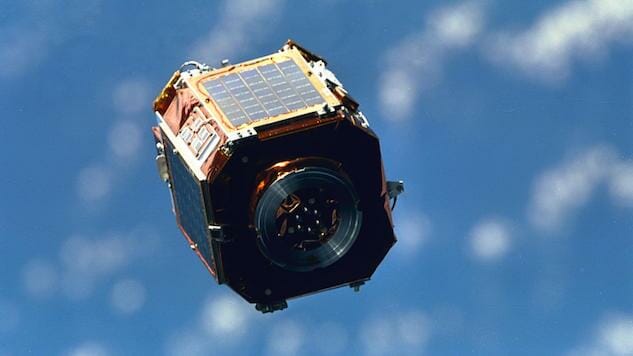Space Matter: Are Small Satellites A New Revolution?

Space Matter is a weekly column that delves into space science and the mechanics of spaceflight. From the latest discoveries in the universe around us to the fits and starts of rocket test flights, you’ll find analysis, discussion and an eternal optimism about space and launching ourselves into the cosmos.
![]()
Recently, India made history by sending up 104 satellites on a single rocket. How is this even possible, you might wonder? How can that many satellites, with all their bulk and weight, fit onto one rocket?
The answer: They’re not as big as you think.
Nanosatellites have transformed the way we think about satellites. It used to be that satellites were for lofty things like GPS and monitoring the weather. The idea of students being able to conduct experiments in space was silly; after all, the competition for space in the limited payload bay of a Space Shuttle was fierce. There just weren’t a lot of options; space was closed to students and those without huge budgets and the ability to work with NASA for space on packed Shuttle flights.
The CubeSat, a type of nanosatellite, was first designed in 1999, but it wasn’t meant to become an industry standard. The specifications were aimed at creating a spacecraft that graduate students could work with in space. Over time, though, they became the standard for small satellites. CubeSats have a 10 cm x 10 cm x 10 cm size and are no more than about 3 lbs. It’s important to note that CubeSats can be scaled; if your project is larger than what can fit into 10 cm x 10 cm x 10 cm, you can make it 20 cm x 20 cm x 20 cm or 40 cm x 40 cm x 40 cm. The idea is that these standard specifications make it easier, cheaper, and safer to build and launch satellites.
 A set of CubeSats as photographed from space after deployment. Photo courtesy of NASA/JSC
A set of CubeSats as photographed from space after deployment. Photo courtesy of NASA/JSC
What about having a standardized satellite makes launching them safer? Well, there are a lot of risks inherent in sending anything to space. Rockets explode. Satellites fail. By having a set size and weight, and certain guidelines any CubeSat must adhere to, creators cut down on unknowns and make it more easy for launch providers to plan for the specifications of their craft.
So how do you launch a CubeSat? For a long time, CubeSats have been secondary payloads aboard large rockets, like SpaceX’s Falcon 9. These small satellite projects usually aren’t well funded enough (or large enough) to pay the $60 million Falcon 9 launch price tag, so they hitch a ride aboard already scheduled and planned launches.
-

-

-

-

-

-

-

-

-

-

-

-

-

-

-

-

-

-

-

-

-

-

-

-

-

-

-

-

-

-

-

-

-

-

-

-

-

-

-

-

 SpaceX flies its reused first stage Falcon 9 for the second time. Photo courtesy of
SpaceX flies its reused first stage Falcon 9 for the second time. Photo courtesy of  Virgin Orbit tests the rocket motor for its small satellite rocket, LauncherOne. Photo courtesy of
Virgin Orbit tests the rocket motor for its small satellite rocket, LauncherOne. Photo courtesy of 






































